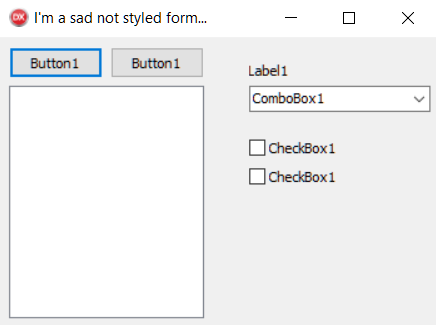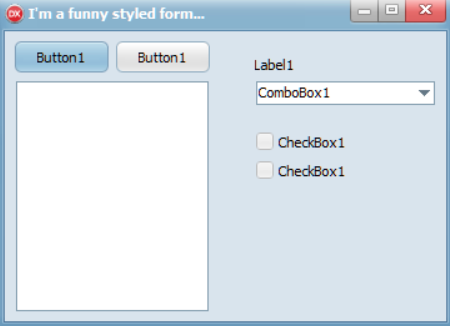Visual Component Library (VCL) styles are a major new entry in the latest versions of Delphi. They were introduced in Delphi XE2 and are still one of the lesser-known features for good old Delphi developers. However, as business people say, looks matter, so the look and feel of your application could be one of the reasons to choose your product over another from a competitor. Consider that, with a few mouse clicks, you can apply many different styles to your application to change the look and feel of it. So, why not to give it a try?
Changing your application's look and feel with VCL styles
Getting ready
VCL styles can be used to revamp an old application or to create a new one with a non-standard GUI. VCL styles are a completely different beast to FireMonkey styles. They are both styles, but with completely different approaches and behaviors.
To get started with VCL styles, we'll use a new application. So, let's create a new VCL application and drag and drop some components onto the main form (for example, two TButton controls, one TListBox, one TComboBox, and a couple of TCheckBox).
You can now see the resulting form that is running on my Windows 10 machine:

How to do it...
Now, we've got to apply a set of nice styles by following these steps:
- Go to Project | Options from the menu. Then, in the resultant dialog, go to Application | Appearance and select all the styles that we want to include in our application.
- If you use the Preview button, the IDE shows a simple demo form with some controls, and we can get an idea about the final result of our styled form. Feel free to experiment and choose the style or set of styles that you like. Only one style at a time can be used, but we can link the necessary resources inside the executable and select the proper one at runtime.
- After selecting all the required styles from the list, we've got to select one in the combobox at the bottom. This style will be the default style for our form and it will be loaded as soon as the application starts. You can delay this choice and make it at runtime using code, if you prefer.
- Click on OK, hit F9 (or go to Run | Run), and your application will be styled:

How it works...
Selecting one or more styles from Project | Options | Application | Appearance will cause the Delphi linker to link the style resource into your executable. It is possible to link many styles into your executable, but you can use only one style at a time. So, how does Delphi know which style you want to use when there are more than one? If you check the Project file (the file with the .dpr extension) by going to Project | View Source Menu (for shortcut lovers, Ctrl + V with the project selected in Project Manager), you can see where and how this little bit of magic happens.
The following lines are the interesting section:
begin
Application.Initialize;
Application.MainFormOnTaskbar := True;
TStyleManager.TrySetStyle('Iceberg Classico');
Application.CreateForm(TMainForm, MainForm);
Application.Run;
end
When we selected the Iceberg Classico style as the default style, the Delphi IDE added a line just before the creation of the main form, setting the default style for all the applications using TStyleManager.TrySetStyle static methods.
TStyleManager is a very important class when you deal with VCL styles. We'll see more about it in an upcoming recipe, where you'll learn how to change styles at runtime.
There's more...
Delphi and C++Builder 10.2 Tokyo come with 39 VCL Styles available in the folder (with a standard installation) at C:\Program Files (x86)\Embarcadero\Studio\19.0\Redist\styles\vcl\.
Embarcadero provides an additional eight premium styles that are available in the VCL premium style pack: https://cc.embarcadero.com/item/30492.
Moreover, it is possible to create your own styles or modify existing ones using the Bitmap Style Designer. You can access it by going to Tools | Bitmap Style Designer Menu.
For more details on how to create or customize a VCL style, visit http://docwiki.embarcadero.com/RADStudio/en/Creating_a_Style_using_the_Bitmap_Style_Designer.
The Bitmap Style Designer also provides test applications to test VCL styles.



























































